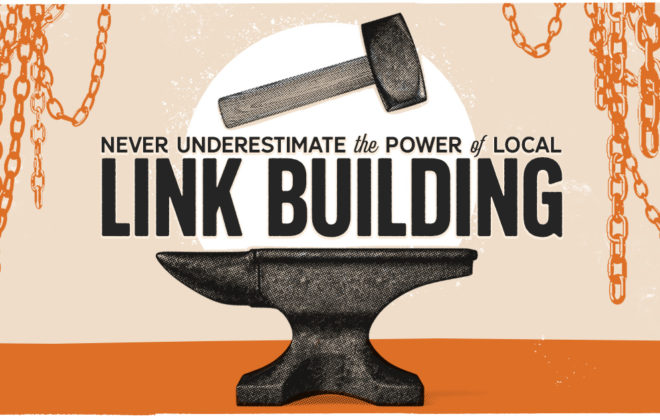
What Metrics Should I Track for SEO Success?
One of the most advantageous aspects of online marketing is that there are a myriad of ways to track success. Examining your analytics reveals insights into how effective your marketing efforts are and where there is room for improvement. Knowing which metrics to look for is essential to determining the performance of your SEO campaigns.
Because there are so many metrics you can track with Google Analytics and other sources, it can lead to an overload of information. Collecting the data is just one step in understanding your SEO performance. You must also know how to interpret and evaluate the data to inform better business decisions.
The entire purpose of an SEO campaign is to drive traffic to your site organically, meaning you are using advertising strategies that are “free.” You may be paying a writer to create content or a marketing company to establish SEO campaigns, but you are not paying for the actual advertising content itself in the way you pay for PPC or sponsored ads. For this reason, analyzing your SEO metrics is even more important as it highlights areas where the strategy is working and where it is not.
To get a better understanding of your SEO performance, here are some of the most important metrics to focus your attention.
Conversions and Conversion Rates
The term “conversion” is loosely applied in SEO marketing because a conversion can be defined as any desired action taken by the consumer. The person doing the “desiring” is, of course, the company and its marketing team. In order to track conversions, you need to establish clear goals. For example, common SEO goals include enticing people to sign up for email newsletters or completing a purchase from your site.
Conversions exist as both micro and macro conversions. Micro conversions are typically defined as smaller steps towards the overall goal (purchasing), which include actions such as joining the mailing list, following your social media account, and even merely browsing your site.
Macro conversions, on the other hand, refer to the main goal of your site, which, for virtually all businesses, is increased transactions. But actually tracking and increasing micro conversions and using the data to alter marketing strategies will, in turn, boost macro conversions as your SEO campaigns move consumers further along the path to purchase.
Tracking conversions (the actual number of times someone completes a desired action) is slightly different than tracking conversion rates. Conversion rates are a percentage of people who converted after clicking on a particular link. Sometimes, your conversion rate can be skewed if your website traffic surges, but few people follow through with the desired action.
Organic Search Traffic
The end goal of a successful SEO campaign is to boost macro conversions and overall sales revenue, but the method by which this is accomplished is through increased organic search traffic. SEO differs from PPC (pay-per-click) marketing because you are not paying for ad placement. Instead, SEO campaigns use specific strategies such as targeting keywords and creating meaningful content to help a given search engine recognize the value of the information and organically bring it to the top of the results page.
This very act increases consumer awareness as most people do not click results past the first page of Google and other search engines. The more exposure you have to your market, the more likely you are to convert consumers. Tracking your organic search traffic will allow you to analyze how well your SEO campaigns are performing and provide insight into how to alter your approach for better results.
Examining your organic search traffic also reveals how your consumers are moving through the sales funnel. What pages do they visit on your site? Are they adding items to their cart but abandoning purchases? With this information, you can more successfully guide the customer journey towards conversion.
Keyword Rankings
Keyword rankings and organic search traffic go hand in hand. The higher your site ranks for its targeted keywords, the more organic traffic you’ll receive. This is a great method for comparing your success to your competition, but these rankings also change often, so it’s important not to get too hung up on your ranking for every single keyword. Search engine bots crawl every page of every site to determine its level of authority, page speed, content relevancy, and mobile optimization.
In recent years, mobile-ready websites have become even more important as Google announced a switch to mobile-first indexing in July 2019. This change means that Google’s crawlers use the mobile version of your site to determine its relevancy and ultimately its ranking, a move likely made because of the rising percentage of people searching, browsing, and shopping on mobile devices.
Though analytics tell us that most people still tend to make purchases on desktop or laptop devices, a significant number of shoppers are turning to mobile first as a way to research and discover products or services. BigCommerce reports that by 2021, mobile sales are expected to surpass desktop with 54 percent of people making mobile purchases. This is important information to keep in mind when building your SEO strategy and identifying keywords, and yet another good reason to track your metrics and re-evaluate based on market trends.
Organic CTR
CTR (click-through rate) refers to the number of people who organically search the internet for a specific word or phrase and then choose to click your site from those results. This metric is important to keep in mind because it indicates your ranking (results that are higher up on the SERP are more likely to have a higher CTR), and it helps track your website traffic. If you can boost your CTR, you can also increase your organic traffic. Although there is some speculation on what Google does with its information on your CTR, it appears that a higher CTR can help raise your search engine ranking, a compelling reason to analyze and increase CTR.
Bounce Rate
Anytime a visitor reaches your website, looks at a page and leaves the site without doing anything, it is considered a “bounce.” Obviously, a high bounce rate will negatively impact your analytics because it indicates that people are landing on your page but not responding to your CTA. A high bounce could also signify that you’re targeting an adverse keyword. Perhaps, the SERP is displaying your site for a specific search query even though your page isn’t actually answering the question that users are looking for. The goal is to keep your bounce rate as low as possible, typically between 26 and 40 percent but anything below 56 percent is still considered decent. If you notice your bounce rate is extremely high, you will want to pinpoint the problem and adjust your strategy.
MOZ Domain Authority
SEO software company Moz developed a domain authority calculator that provides a score between 1 and 100 to inform you of how likely your site is to rank on SERPs. This is a useful metric because it provides insight into how well your SEO strategy is working. If your DA is continually low, you may need to consider your linking strategy or other SEO factors to increase your ability to rank. It becomes much more difficult to boost organic traffic or increase conversions if you’re not currently appearing on the first page of the SERPs.
Backlinks
Linking building is an essential part of every SEO strategy as it is a way for Google and other search engines to identify your website’s credibility, increasing your chances of ranking high on the SERP. Through Google Analytics, you can manually track your backlinks under the “Referral” traffic tab. You want to keep an eye on the total number of backlinks you’re receiving, and try to boost that if it’s too low, as well as noting where your backlinks are coming from—what domains are referring users to your site. Some backlinks may negatively impact your rankings, so if you can identify and reject them before Google bots crawl your site, you can prevent this from happening.
Page Speed/Site Speed
UX (user experience) is a major part of building a loyal customer base. If your website isn’t quick to respond, easy to navigate and aesthetically pleasing, your conversion rate will suffer, which is why page and site speed is so important. Potential consumers will quickly lose interest in your site and your products if your pages take too long to load, and they will simply move on to the next link in the SERP list. Test your page and site speed on both desktop and mobile devices. Sometimes it might appear to be working just fine on your desktop or laptop, but mobile pages load at a slower rate. With and increasing number of people researching and shopping on their smartphones, it is imperative to provide the same UX on mobile as on desktop.
Measure Success With These SEO Tools
-
Google Analytics
- One of the most common analytic tools, Google Analytics is a service that allows businesses to track and record website data such as conversion rate, website traffic, bounce rate and more.
-
Google Search Console
- Another tool available through Google, Google Search Console allows website owners to identify areas of improvement on their site to boost rankings. It differs from Google Analytics because the information is search engine-centric rather than user-centric.
-
SEMrush
- SEMrush is another marketing tool that provides valuable insights into many different marketing services including SEO, PPC and Keyword Research amongst others. It can be extremely useful when trying to identify the best keywords to boost your ranking and organic traffic.
-
Ahrefs
- This tool is mainly used for SEO purpose and can provide a plethora of information on your backlinks, allowing you to find backlinks with potentially negative SEO value and reject them before Google can crawl your site.
-
Google PageSpeed Insights
- This Google-run tool is mainly used to track your page speed, so that you can address the problem before users run into speed issues and your organic traffic numbers begin to decline. It can help optimize your site speed by making suggestions on specific areas to change.
Understanding Your SEO Metrics
With an abundance of useful analytical data at your fingertips, it would be disadvantageous to ignore those metrics. SEO is a very successful long-term marketing solution to grow your business for years to come, which is why it’s so important to understand which metrics you should track and record. Based on key information like conversion rates, organic traffic, and keyword rankings, you can more accurately fine-tune your strategies to implement methods that entice consumers to buy.
Paul Rakovich
Browse All PostsTell Us Your Goals
Recent Posts
- Google PMax: Get the Most Out of Your Ad Campaigns While Combating Fraud
- Lead Ads Don’t Have to Suck: How to Leverage Them Correctly
- Why More Expensive PPC Ads are Almost Always Worth It
- Unlock the Secrets of Organic CPA: The Ultimate Guide to Cost Per Acquisition
- Secrets We’ve Learned from Years Working with Paid Account Reps at Meta, TikTok, LinkedIn and Google

